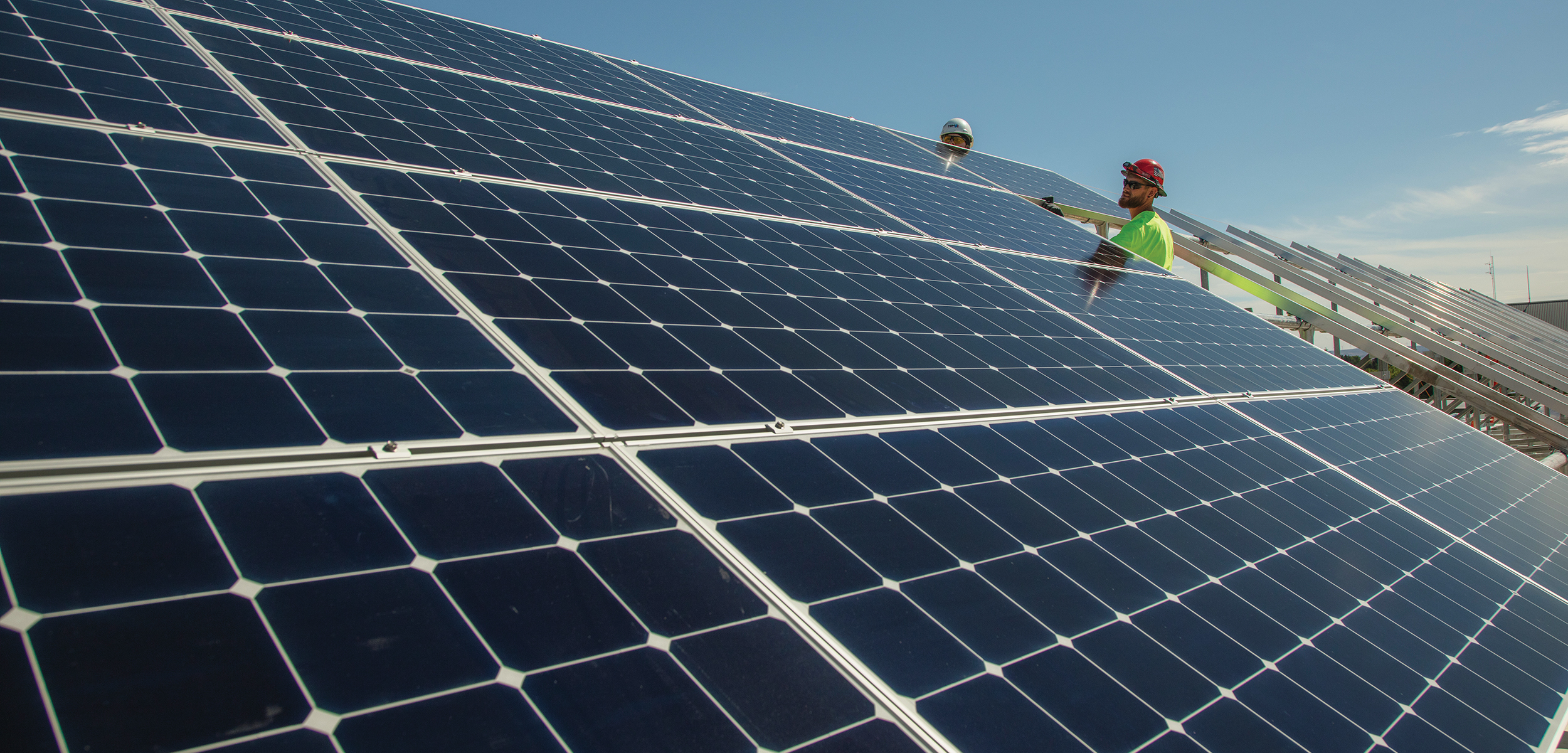
When the state of Washington adopted a law in 2005 requiring all new state-funded building projects to achieve a Leadership in Energy and Environmental Design (LEED) rating of at least Silver, CWU decided to go for the Gold—and occasionally Platinum.
Dean Hall renovation was the first LEED project on the university’s Ellensburg campus. Completed in 2008, the $31.5 million project incorporated improved water efficiency, sustainable building materials, and design elements that helped Central earn its first LEED Gold rating.
“Within operations we have a rather rigorous commitment to sustainability,” said Shane Scott, CWU’s associate vice president for campus planning and facilities management, who oversees university operations. “I bet I talk sustainability at least once per day, about some topic, be it energy conservation, water conservation, or appropriate tree and plant plantings throughout the campus. We have been rather sustainably focused in operations for quite some time.”
Scott explained that several years ago, Susan Kaspari, a CWU Geological Sciences professor, played an important role in helping the university start on the path toward sustainability by introducing the institution to the Association for the Advancement of Sustainability in Higher Education STARS (known as AASHE STARS), a sustainability tracking, assessment, and rating system used by colleges and universities to measure their sustainability performance.
However, he added, it was the hiring of Kathleen Klaniecki in 2020 as the university’s sustainability coordinator that permitted Central to focus on sustainability at every level, including in the construction of new buildings.
“Kathleen has really helped take this in the direction of where we can demonstrate that we are on a sustainable path,” he said. “I really appreciate having her in operations, because she adds that sustainability voice to all of our topics. She helps us come up with sustainable solutions.”
Scott also pointed to Joanne Hillemann, CWU senior architect on the Capital Planning and Projects Team, as a key player in Central’s efforts to achieve LEED certification. Hillemann, in fact, is the only architect at the university who is a LEED-accredited professional. She’s also been involved in the planning and construction of every LEED project on campus.
Hillemann, who has taught about the importance of LEED buildings to CWU students, said the overarching principles of green construction include building for the long term (projects that will last at least 50 years), building for our children (making a safe environment), and building for the planet (using sustainable building materials).
“LEED is required for large, state-funded buildings, but it is also important to CWU for the health and safety of the students and staff that spend time in the buildings,” she explained. “It’s better for our planet and to mitigate global warming. Improved sustainability is also one of the three main university-wide goals.”
So, what makes a LEED-certified building?
According to Delano Palmer, director of the Capital Planning and Projects Team, many considerations go into making an energy-efficient building that earns LEED certification.
“You look at how the building is heated and cooled—whether you’re using steam or hot water, and how you are re-using heat waste in the mechanical system,” he said. “Are you using solar panels? Wind power? There are so many different elements to it. They are also looking at the actual materials used in the building. Some reflect more heat. Some absorb more heat. That’s important depending on what climate you’re looking at.”
Palmer said another aspect is the lifespan of the building materials “because, obviously, the longer a material lasts, the fewer times you have to replace it.” Other factors include the amount of carbon emissions used in the process of producing the building materials, the carbon footprint of transporting the materials, and even the amount and type of waste produced during the process of creating building materials.
“CWU is trying to limit its carbon footprint,” he said. “Not only are we doing it from a regulatory standpoint, but it’s also the right thing to do. Anything that we can do to benefit our environment, it’s going to be better for us.”
For example, Palmer said the Health Sciences Building, currently under construction, features a number of energy-saving elements, including a solar heat plenum, which is a preheating system that uses solar radiation to partially warm air as it is drawn into the building. As a result, the system uses less energy to heat air. Additionally, the building will have 9,000 square feet of solar panels and three electric vehicle charging stations.
“New academic buildings are required to go to LEED Silver,” Palmer said. “But our goal is to build it to LEED Gold. That is the standard that we’ve set for ourselves, which is to exceed what the state expects of us.”
Palmer said the cost of incorporating more energy-efficient building materials and systems into a structure is more expensive initially, but they provide for future savings in energy usage, operations, and maintenance.
“There are typically higher upfront costs but lower operating costs in the long term, especially if we’re thinking in terms of regulatory agencies that are going to be requiring more stringent energy efficiency needs in the future,” he said.
As for the future, Palmer said the university is looking at continuing to make its buildings more energy efficient and perhaps adding additional electric vehicle charging stations on campus, along with more solar panels. He applauded university groundskeeping crews, who have been looking at ways to make landscaping less water-intensive through the use of more native vegetation and less plant density.
“We’re also going to be soliciting the opinions of engineers and architects to find ways we can be more innovative with the structures we have,” he said. “The bottom line is we want to do what best serves our student body and create a world-class learning environment for our students.”






comments powered by Disqus